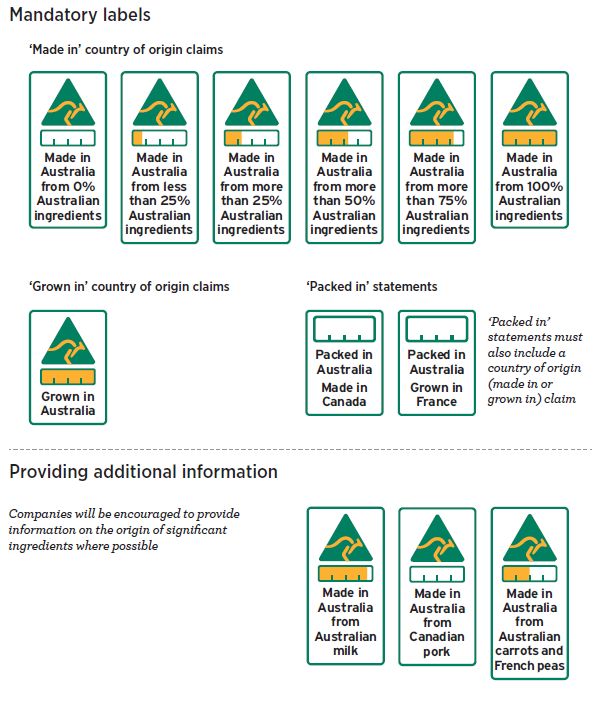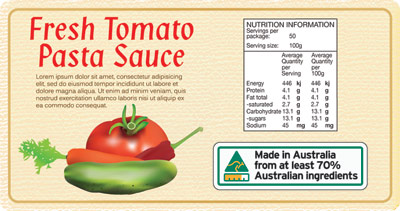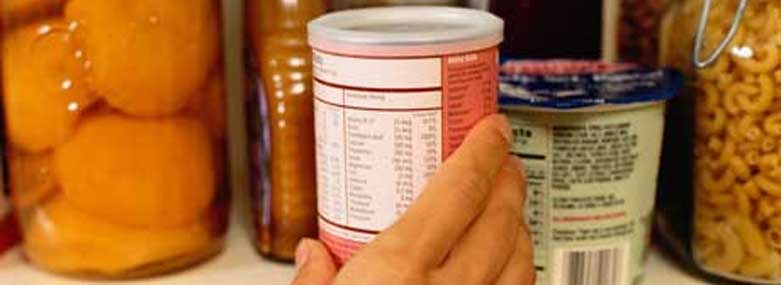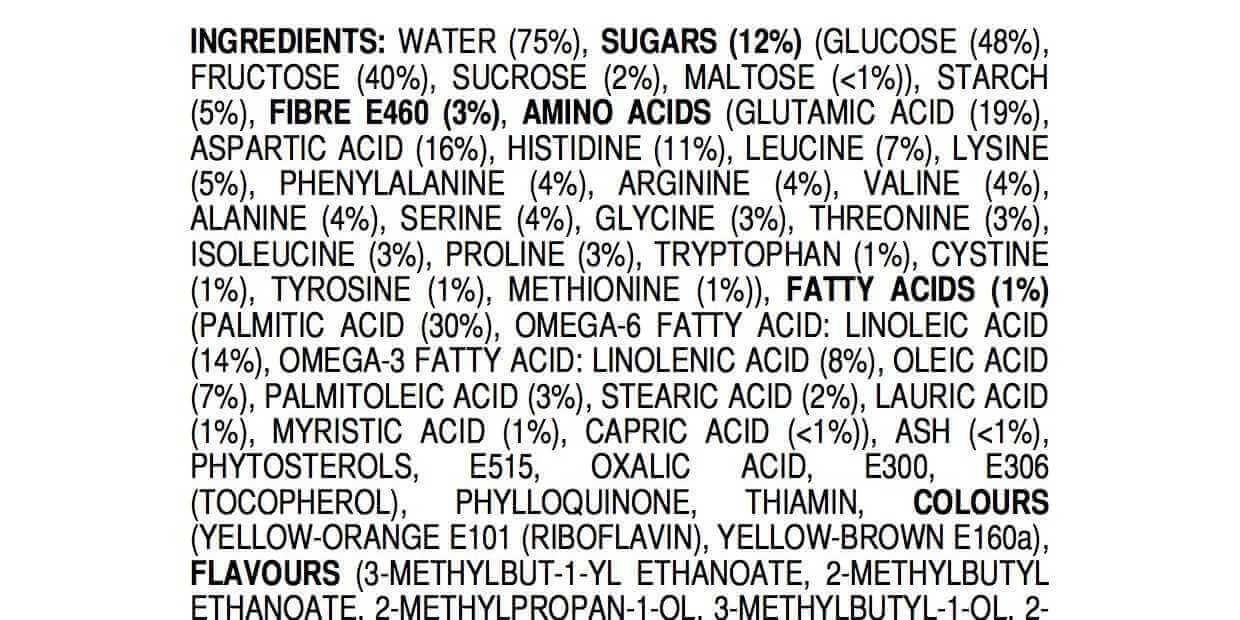40 is country of origin required on food labels
› labelling › domestic-labellingDomestic Labelling | Wine Australia Imported foods must also display country of origin information. Like non-priority foods, imported foods only have to carry a text statement. Section 8 of the Country of Origin Food Labelling Information Standard defines the terms ‘grown, ‘produced’ and ‘made’ as follows: grown: (a) a food or ingredient was grown in a country if it: Origin labelling - Food Safety Origin labelling of the primary ingredient of a food: Article 26 (3) of Regulation (EU) No 1169/2011 requires that where the origin of a food is given and is different from the one of its primary ingredient, the origin of the primary ingredient shall be given or at least indicated as being different to the origin of the food.
Origin Labeling Requirements for Imported Commodities Passed Tuesday, June 15, 2021 We have previously reported on proposed Senate legislation that would require country of origin labeling (COOL) for imported commodities sold online. On June 8, 2021, the...

Is country of origin required on food labels
PDF Topic: Country-of-origin-Labeling on FDA Foods and Additives II will expound on the relevant food labeling laws, and the great obstacles this proposed labeling requirement would face. Part III will address some unanswered counterarguments. Part IV will detail how Japan has required a law to label foods with country-of-origin. The Essay will propose the FDA should adopt a law similar to Japan's. Country of Origin Labeling - an overview | ScienceDirect Topics Country of origin labeling (7 CFR Part 60 et seq.) is a retail-level requirement that provides consumers with notification about the geographic origin of ...Chemical use: Toxic Substance Control Act—p...Air quality: Clean Air Act—control of criteria pol...Water quality: Safe Drinking Water Act—state ... CPG Sec. 560.200 Country of Origin Labeling CPG Sec. 560.200 Country of Origin Labeling BACKGROUND: A statement of the country of origin on the labeling of imported foods is not required by the Federal Food, Drug, & Cosmetic Act. This is a...
Is country of origin required on food labels. Mandatory country-of-origin labeling (US) - Wikipedia For country of origin labeling in general, see Country of origin § Labelling requirements. Country of origin labeling (COOL) (or mCOOL [ m for mandatory]) is a requirement signed into American law under Title X of the Farm Security and Rural Investment Act of 2002 (also known as the 2002 Farm Bill), codified at 7 U.S.C. § 1638a as Notice of ... Country of origin food labelling | business.gov.au Country of origin labelling is not required on the following food products: foods not for human consumption (for example, pet food) foods sold in restaurants, cafes, take-away shops or schools foods sold at fundraisers foods sold from the same premises in which they have been made and packed. Country of origin labelling - Food Standards The Australian Government introduced a country of origin food labelling system under Australian Consumer Law on 1 July 2016. Country of origin labelling requirements for food is in the Country of Origin Food Labelling Information Standard 2016, under the Competition and Consumer Act 2010. These requirements became mandatory on 1 July 2018. Country-of-Origin Labeling for Foods and the WTO Trade ... - Congress Country-of-Origin Labeling for Foods and the WTO Trade Dispute on Meat Labeling Congressional Research Service Summary Since the final rule to implement country-of-origin labeling (COOL) took effect in March 2009, most retail food stores have been required to inform consumers about the country of origin of
Country of Origin Marking Requirements - PackagingLaw.com Under the Tariff Act of 1930, every article of foreign origin (or its container) imported into the U.S., unless exempted, must be marked in a manner that will indicate to the ultimate purchaser the article's country of origin. For example, goods originating in China must be marked, "Made in China" or "Product of China." › Details › F2017C00920Country of Origin Food Labelling Information Standard 2016 Sep 28, 2017 · This is a compilation of the Country of Origin Food Labelling Information Standard 2016 that shows the text of the law as amended and in force on 12 August 2017 (the compilation date). The notes at the end of this compilation (the endnotes) include information about amending laws and the amendment history of provisions of the compiled law. › print › pdfPackaging and labelling - Food Standards Agency Country of Origin for Primary Ingredients and Country of Origin for Certain Meats.€ Find out when you must label your meat, fish or seafood product with its country of origin. In NI,€EU Country of Origin rules, as applied by the Northern Ireland Protocol (NIP), are applicable for food placed on the NI market.€Where EU Law requires an ... Country of Origin Labeling (COOL) | Agricultural Marketing Service Country of Origin Labeling (COOL) is a labeling law that requires retailers, such as full-line grocery stores, supermarkets and club warehouse stores, to notify their customers with information regarding the source of certain foods.
Country of Origin Requirements in the United States: An Overview Country of origin labeling is mandatory for all consumer products imported and sold in the United States. Country of origin labeling is often as straightforward as printing a 'Made in [INSERT COUNTRY]' on the product and its packaging. Country of Origin Labeling (COOL) Frequently Asked Questions Country of Origin Labeling (COOL) is a consumer labeling law that requires retailers (most grocery stores and supermarkets) to identify the country of origin on certain foods referred to as "covered commodities". Country of Origin Labeling of Agricultural Products While the COOL law contains an expressed exclusion for an ingredient in a processed food item, many imported items still must be labeled with country of origin information under the Tariff Act of 1930. Items that are imported in consumer-ready packages also are required to be labeled with country of origin information. Country of origin food label responsibilities - Queensland Imported products labelling states the country of origin. This origin statement must be placed in a clearly defined box on the label for most imported foods. Example Priority requirements There are different labelling requirements for priority and non-priority foods. Priority foods Priority foods include: fruit and vegetables meat bread milk
› inspection › import-exportEuropean Union | Food Safety and Inspection Service Jun 03, 2022 · The phrase "Origin: United States" if the animals were born, raised and slaughtered in the United States. In the case of imported animals, the countries of birth and of feeding must be indicated. If the animals were raised in a country other than the United States for less than 30 days, an indication of the other country is not required.
Must processed food products have a country of origin label? Retail items that meet the definition of a processed food item do not require labeling under the COOL final rule. For more information, visit Common Questions & Answers on Country of Origin Labeling.
› foodlaw › processingsectorPackaging, Labeling, Transporting, Storing — Food Law Indirect food additives (e.g., packaging) may be only used under conditions of good manufacturing practice; that is, the quantity 1) does not exceed the amount reasonably required to accomplish the intended effect in the food, 2) shall not exceed any prescribed limitations, 3) shall not be intended to accomplish any physical or technical effect ...
› PoshmarkPoshmark - Home - Facebook Poshmark, Redwood City, California. 2,120,095 likes · 37,363 talking about this. More than just a shopping destination, Poshmark is a vibrant community powered by millions of sellers. Buy, sell, and...
Country of origin on food labels - Canadian Food Inspection Agency In Canada, there are mandatory requirements for certain food products to indicate the foreign state (definition) of origin on their labels. Although foreign states include countries as well as World Trade Organization (WTO) members, the Industry Labelling Tool commonly refers to this requirement as country of origin labelling.
A Brief History and Overview of Country of Origin Labeling Requirements Country of Origin Labeling (COOL) laws and regulations require retailers to notify their customers of the country of origin of covered commodities, which include beef, veal, lamb, chicken, fish and shellfish, goat, pork, perishable agricultural commodities, macadamia nuts, pecans, ginseng, and peanuts. One might think that this is a simple matter, but as with most regulatory requirements ...
Country of Origin Labeling: What Businesses Need to Know macadamia nuts. pecans. ginseng. peanuts. Commodities covered under COOL must be labeled at retail to indicate its country of origin. For fish and shellfish, the method of production -- wild or farm-raised -- must be specified. Commodities are excluded from mandatory COOL if the commodity is an ingredient in a processed food item.

Australia has new country of origin food labeling laws | Busselton-Dunsborough Mail | Busselton, WA
Country of origin food labelling | ACCC Country of origin food labelling If you sell or supply food for retail sale in stores, markets, online or from vending machines it is likely that you will be required to comply with the Country of Origin Food Labelling Information Standard 2016 (Standard). Types of food covered by the standard Label requirements The labels
Food labelling: country of origin - GOV.UK If all these activities took place in a single country, the label 'Origin: [name of country]' is acceptable. For the GB market, 'United Kingdom' is the origin label for beef and veal from both GB...
Marking of Country of Origin on U.S. Imports Acceptable Terminology and Methods for MarkingEvery article of foreign origin entering the United States must be legibly marked with the English name of the country of origin unless an exception from marking is provided for in the law.
Country of Origin Food Labeling | Jenn David Design The Country of Origin Labeling requirement states that "Food labeling statements regarding geographical origin must not be false or misleading in any particular." So it would be incorrect to state that the cocoa is a product of both Mexico and Chile on the label. You would need two labels in this case—one for each respective country of origin.
Country of origin labelling for food products - Canadian Food ... The new FDR requirements are available in the Industry Labelling Tool. Food businesses have a transition period to meet them, during which they must comply with either the former or the new requirements. In Canada, there are mandatory requirements for certain food products to indicate the country of origin on their labels.
Country of origin | ACCC You will find country of origin labelling on most food you buy at the supermarket, local stores, markets, online or from a vending machine. Food bought from restaurants, cafes, take-away shops, schools and caterers does not have to be labelled. Food that was packaged and labelled on or before 30 June 2018 can still be sold without the new labels.
How to Navigate the Country of Origin Food Labelling Requirements — Lau ... Requirements that must be met before the Australian country of origin labels can be used. When a food is grown, produced in, packed or made in Australia, it is mandatory that proportion of Australian content be disclosed. Where businesses cannot accurately identify the percentage of Australian content in a food, the claim that the food contains ...
Country of origin of food - Commerce Commission Country of origin of food. From 12 February 2022, businesses must disclose where certain fresh and thawed food comes from that they supply, offer, or advertise for supply to consumers in New Zealand. The requirement to disclose only applies to cured pork products and single-ingredient fruit, vegetable, fish, seafood, and meat that is no more ...
Which foods are covered in the country of origin labeling law? Knowledge Article. Foods that must be labeled with their country of origin are: 1. Muscle cuts of beef (including veal), lamb, pork, goat, and chicken; 2. Ground beef, ground lamb, ground pork, ground goat, and ground chicken; 3. Wild and farm-raised fish and shellfish; 4.
CPG Sec. 560.200 Country of Origin Labeling CPG Sec. 560.200 Country of Origin Labeling BACKGROUND: A statement of the country of origin on the labeling of imported foods is not required by the Federal Food, Drug, & Cosmetic Act. This is a...
Country of Origin Labeling - an overview | ScienceDirect Topics Country of origin labeling (7 CFR Part 60 et seq.) is a retail-level requirement that provides consumers with notification about the geographic origin of ...Chemical use: Toxic Substance Control Act—p...Air quality: Clean Air Act—control of criteria pol...Water quality: Safe Drinking Water Act—state ...













Post a Comment for "40 is country of origin required on food labels"